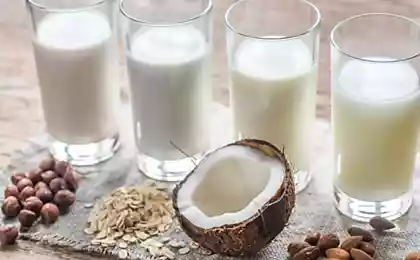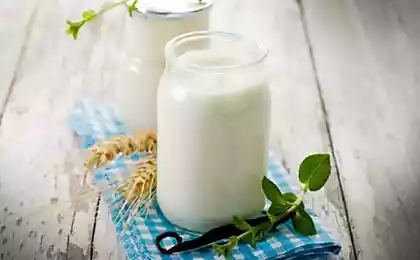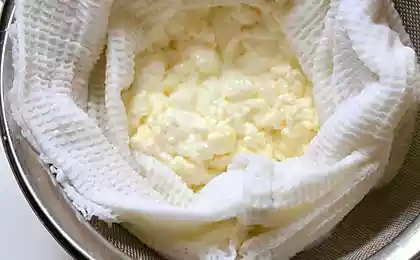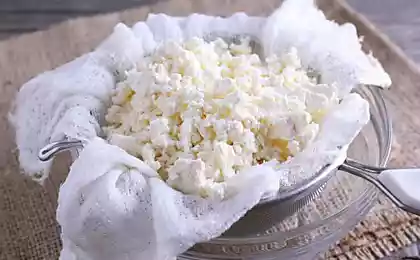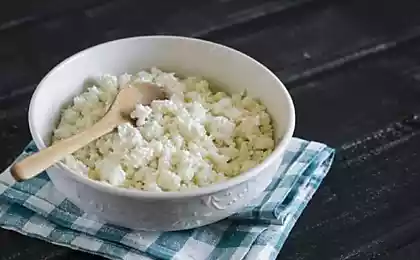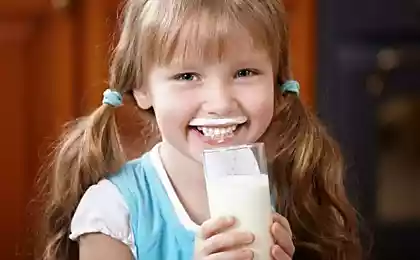540
Properly soured milk - YOGURT, CHEESE AND INTESTINAL
Survived. Increased generation of urban children who do not understand that means "the milk turned sour and curdled".
In my life never seen, like milk, slightly warmed on the stove, turns into a translucent goo with the cereal.
Blame sterilization and aseptic packaging, invented by the company TetraPak. Sterilization — the heating of milk to temperatures above 100 ° C, kills bacteria, and pathogenic, and normal lactic acid, and then the milk is so cleverly dispensed and Packed in a box of laminated cardboard with foil inside that new bacteria will not occur.
Previously, to enhance the shelf life, the milk was boiled, then under the lid and in the fridge it can last longer than raw, but certainly not two months. Bacteria are everywhere, and they don't miss a chance to multiply in this nutrient.

Milk is a emulsion of fats, those from which butter is obtained. In addition to the fat in milk contains proteins, especially casein (tiny fat droplets and colloidal particles of protein make milk white), sugar, lactose, vitamins, macro - and micronutrients. In General, the ideal mix for feeding babies an exclusive development of mammals. But cow's milk used to feed both people and cats, and microorganisms.
Lactic acid bacteria in milk do their basic business: break down the disaccharide lactose into glucose and galactose, and then oxidize them to lactic acid, thus obtaining energy. (Some types that only use glucose and secrete galactose back.) Milk, of course, becomes acidic, cazeina do not stand — their structure is disturbed, and they precipitate out of solution, forming flakes. Contributes to this process and heat: it's a shame when milk, it tastes like not sour, rolls up in a saucepan. And if in a Cup of hot coffee... in Short, the setting is the denaturation of proteins caused by the acidification of the environment and (or) heat, the exact same process as when marinating and frying meat.
And what is souring?
Yes not bad, if you make a process controlled milk take fresh and high quality, it is ripened and let him not some random bacteria, specially selected. You can add in milk a spoon of sour cream or throw a crust of black bread, you can buy a "branded" guaranteed useful starter. Though children once they learn the origin of the yogurt.
For baby milk — the only food in his small intestine produces lactase, the enzyme that breaks down lactose to glucose and galactose, which there and soaked in blood. But many people, when they come out of infancy, the active lactase is getting smaller.
If a person drinks milk, lactose gets to the colon, goes to the local bacteria, those actively feed, reproduce rapidly and happy... but their owner is experiencing serious discomfort.
In a sense, nature has wisely arranged it to grown-up individuals did not take food online in babies. But when man domesticated the cow, the ability to eat milk throughout life has become very profitable.
This example is often cited population genetics — evolutionary changes, which arose and spread in front of us.
The gene for lactose tolerance appeared in Northern Europe about 5000 years BC, and it is there now the most common; however, even in this region there are people who milk for the future is not. For them there is a lactose-free milk and traditional dairy products.
Actually dairy products — a brilliant biotech solution to our ancestors. First, the acidified environment less attractive to harmful bacteria than sweet milk. Second, organisms of many adults do not digest lactose — the milk gives them severe diarrhea. However, they are unable to eat dairy products, because the microorganisms in the yogurt or kefir work on the principle "that goat weed ate, but did not touch the peas" — lactose consumed themselves, and other nutrients leaving us.
In addition, bacteria for protection against phages, drying and other troubles synthesize and secrete polysaccharides — chains of residues of glucose, galactose and other monosaccharides. These substances are good for digestion, and though they don't digest, like plant tissue.
And they make milk drink thick and a bit chewy in a good yogurt is a spoon and the sugar from sinking. Opponents of starch and other artificial thickeners in the yoghurt factory will be interested to know that the natural thickeners are the products of microorganisms.
Curdled milk, fermented baked milk, kefir, yogurt, different species composition of the inhabitants. In milk live lactic acid bacteria, which are best developed at a temperature of about 30 OC in the warmest corner of the kitchen.
Fermented baked milk — the same milk, but warm milk with cream, soaked in the cooling oven (or incubator).
Here we again meet with the Maillard reaction: the reaction products of sugars with proteins, which flows when heated, add baked milk and fermented baked milk creamy color and nutty flavor.
Kefir and yogurt are milk distant relatives.
Yogurt live bulgaricus (a special kind of lactic acid bacteria) and Streptococcus thermophilus; these two guys love the heat, so ferment yogurt at 42-45 OS. Kefir — kefir mushroom, a symbiotic community of beneficial bacteria and yeast. With yeast yogurt contains small amounts of ethanol, what was the basis for a fascinating urban legends.
Cheese is essentially curdled milk from which otsudili serum (see recipe). Whey from under curdled milk — not only an element of tongue twisters, there are many valuable components: the serum can be, for example, knead the dough for pancakes.
By the way, recently appeared in supermarkets and packing of drinking whey with sugar and fruit juices: and useful, and crisis management.
Recipe for homemade cottage cheese
The milk market is sure to boil the store — not necessarily. Add a spoonful of sour cream and put in a warm place.
After about a day the milk will turn sour. Very carefully to small bubbles around the edge, heated it in a pot (not enamel, but it will burn) or recipesa water bath. Mix sour milk with it, otherwise the cheese will get grainy.
After heating allow to cool (half an hour, can be longer). Serum should be clear, the clumps are well formed.
Pour all together in a colander with cheesecloth, and when the bulk of the whey has drained, hang the gauze node, to drain the remnants of the (approximately on the hour until it stops dripping). published
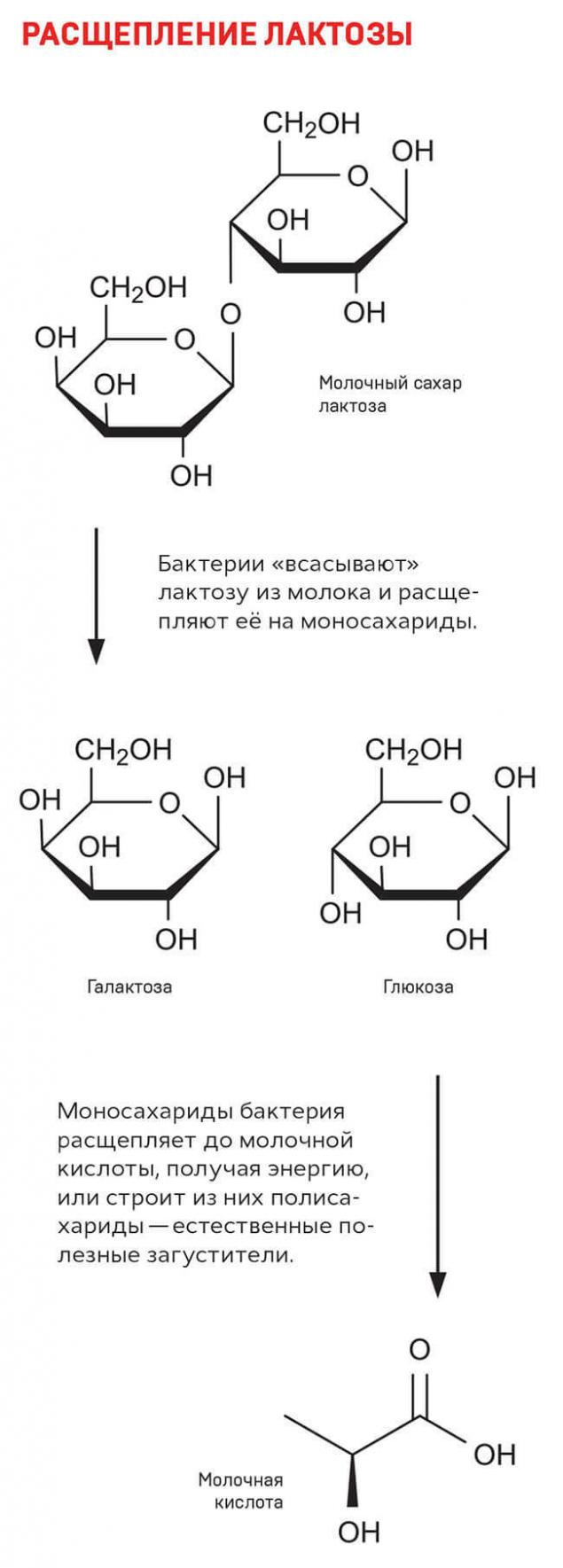
ELENA KLESCHENKO
P. S. And remember, only by changing their consumption — together we change the world! ©
Join us in Facebook and in Vkontakte, and we're Classmates
Source: kot.sh/statya/211/pravilno-skisshee-moloko
In my life never seen, like milk, slightly warmed on the stove, turns into a translucent goo with the cereal.
Blame sterilization and aseptic packaging, invented by the company TetraPak. Sterilization — the heating of milk to temperatures above 100 ° C, kills bacteria, and pathogenic, and normal lactic acid, and then the milk is so cleverly dispensed and Packed in a box of laminated cardboard with foil inside that new bacteria will not occur.
Previously, to enhance the shelf life, the milk was boiled, then under the lid and in the fridge it can last longer than raw, but certainly not two months. Bacteria are everywhere, and they don't miss a chance to multiply in this nutrient.

Milk is a emulsion of fats, those from which butter is obtained. In addition to the fat in milk contains proteins, especially casein (tiny fat droplets and colloidal particles of protein make milk white), sugar, lactose, vitamins, macro - and micronutrients. In General, the ideal mix for feeding babies an exclusive development of mammals. But cow's milk used to feed both people and cats, and microorganisms.
Lactic acid bacteria in milk do their basic business: break down the disaccharide lactose into glucose and galactose, and then oxidize them to lactic acid, thus obtaining energy. (Some types that only use glucose and secrete galactose back.) Milk, of course, becomes acidic, cazeina do not stand — their structure is disturbed, and they precipitate out of solution, forming flakes. Contributes to this process and heat: it's a shame when milk, it tastes like not sour, rolls up in a saucepan. And if in a Cup of hot coffee... in Short, the setting is the denaturation of proteins caused by the acidification of the environment and (or) heat, the exact same process as when marinating and frying meat.
And what is souring?
Yes not bad, if you make a process controlled milk take fresh and high quality, it is ripened and let him not some random bacteria, specially selected. You can add in milk a spoon of sour cream or throw a crust of black bread, you can buy a "branded" guaranteed useful starter. Though children once they learn the origin of the yogurt.
For baby milk — the only food in his small intestine produces lactase, the enzyme that breaks down lactose to glucose and galactose, which there and soaked in blood. But many people, when they come out of infancy, the active lactase is getting smaller.
If a person drinks milk, lactose gets to the colon, goes to the local bacteria, those actively feed, reproduce rapidly and happy... but their owner is experiencing serious discomfort.
In a sense, nature has wisely arranged it to grown-up individuals did not take food online in babies. But when man domesticated the cow, the ability to eat milk throughout life has become very profitable.
This example is often cited population genetics — evolutionary changes, which arose and spread in front of us.
The gene for lactose tolerance appeared in Northern Europe about 5000 years BC, and it is there now the most common; however, even in this region there are people who milk for the future is not. For them there is a lactose-free milk and traditional dairy products.
Actually dairy products — a brilliant biotech solution to our ancestors. First, the acidified environment less attractive to harmful bacteria than sweet milk. Second, organisms of many adults do not digest lactose — the milk gives them severe diarrhea. However, they are unable to eat dairy products, because the microorganisms in the yogurt or kefir work on the principle "that goat weed ate, but did not touch the peas" — lactose consumed themselves, and other nutrients leaving us.
In addition, bacteria for protection against phages, drying and other troubles synthesize and secrete polysaccharides — chains of residues of glucose, galactose and other monosaccharides. These substances are good for digestion, and though they don't digest, like plant tissue.
And they make milk drink thick and a bit chewy in a good yogurt is a spoon and the sugar from sinking. Opponents of starch and other artificial thickeners in the yoghurt factory will be interested to know that the natural thickeners are the products of microorganisms.
Curdled milk, fermented baked milk, kefir, yogurt, different species composition of the inhabitants. In milk live lactic acid bacteria, which are best developed at a temperature of about 30 OC in the warmest corner of the kitchen.
Fermented baked milk — the same milk, but warm milk with cream, soaked in the cooling oven (or incubator).
Here we again meet with the Maillard reaction: the reaction products of sugars with proteins, which flows when heated, add baked milk and fermented baked milk creamy color and nutty flavor.
Kefir and yogurt are milk distant relatives.
Yogurt live bulgaricus (a special kind of lactic acid bacteria) and Streptococcus thermophilus; these two guys love the heat, so ferment yogurt at 42-45 OS. Kefir — kefir mushroom, a symbiotic community of beneficial bacteria and yeast. With yeast yogurt contains small amounts of ethanol, what was the basis for a fascinating urban legends.
Cheese is essentially curdled milk from which otsudili serum (see recipe). Whey from under curdled milk — not only an element of tongue twisters, there are many valuable components: the serum can be, for example, knead the dough for pancakes.
By the way, recently appeared in supermarkets and packing of drinking whey with sugar and fruit juices: and useful, and crisis management.
Recipe for homemade cottage cheese
The milk market is sure to boil the store — not necessarily. Add a spoonful of sour cream and put in a warm place.
After about a day the milk will turn sour. Very carefully to small bubbles around the edge, heated it in a pot (not enamel, but it will burn) or recipesa water bath. Mix sour milk with it, otherwise the cheese will get grainy.
After heating allow to cool (half an hour, can be longer). Serum should be clear, the clumps are well formed.
Pour all together in a colander with cheesecloth, and when the bulk of the whey has drained, hang the gauze node, to drain the remnants of the (approximately on the hour until it stops dripping). published

ELENA KLESCHENKO
P. S. And remember, only by changing their consumption — together we change the world! ©
Join us in Facebook and in Vkontakte, and we're Classmates
Source: kot.sh/statya/211/pravilno-skisshee-moloko

